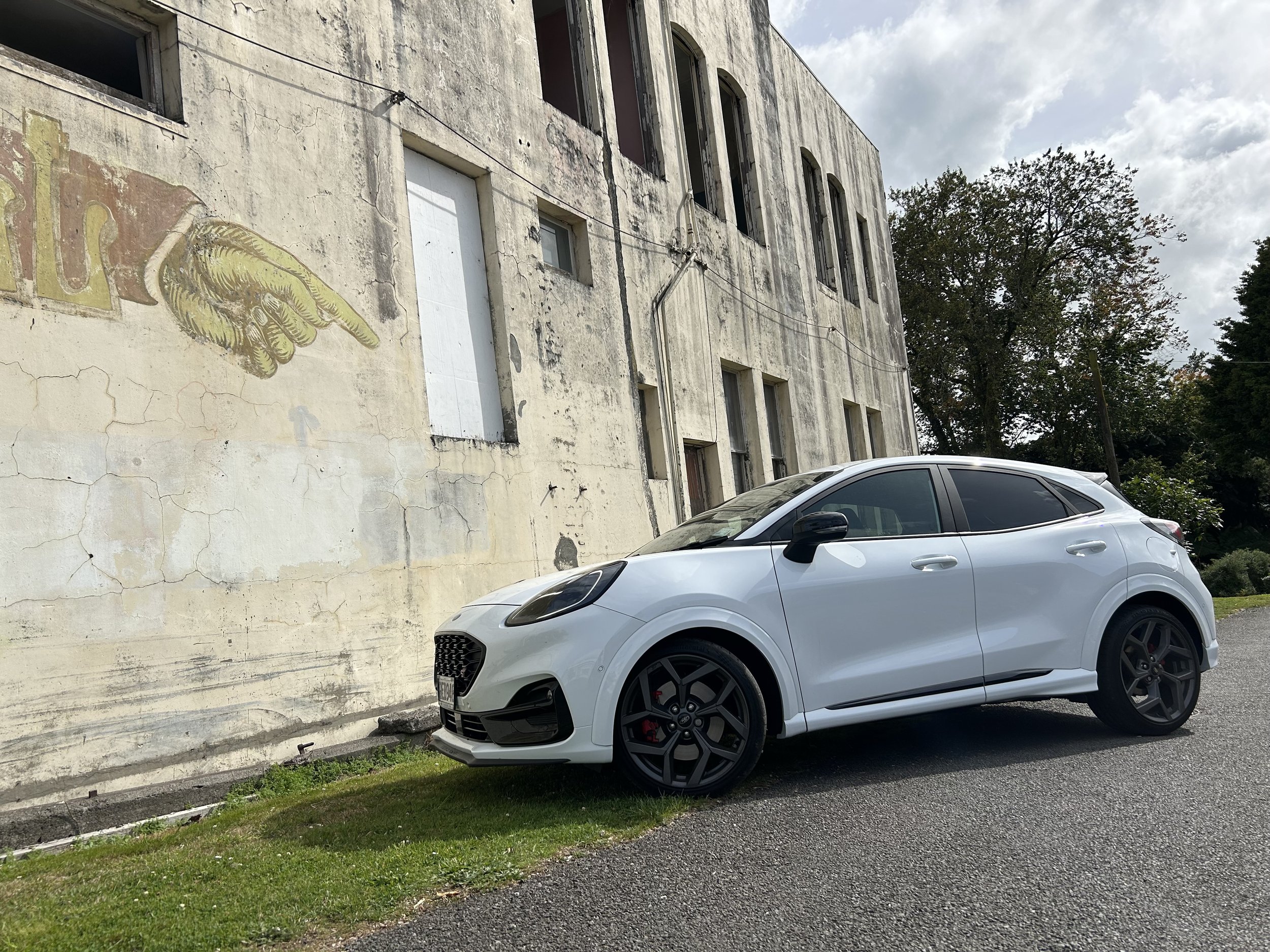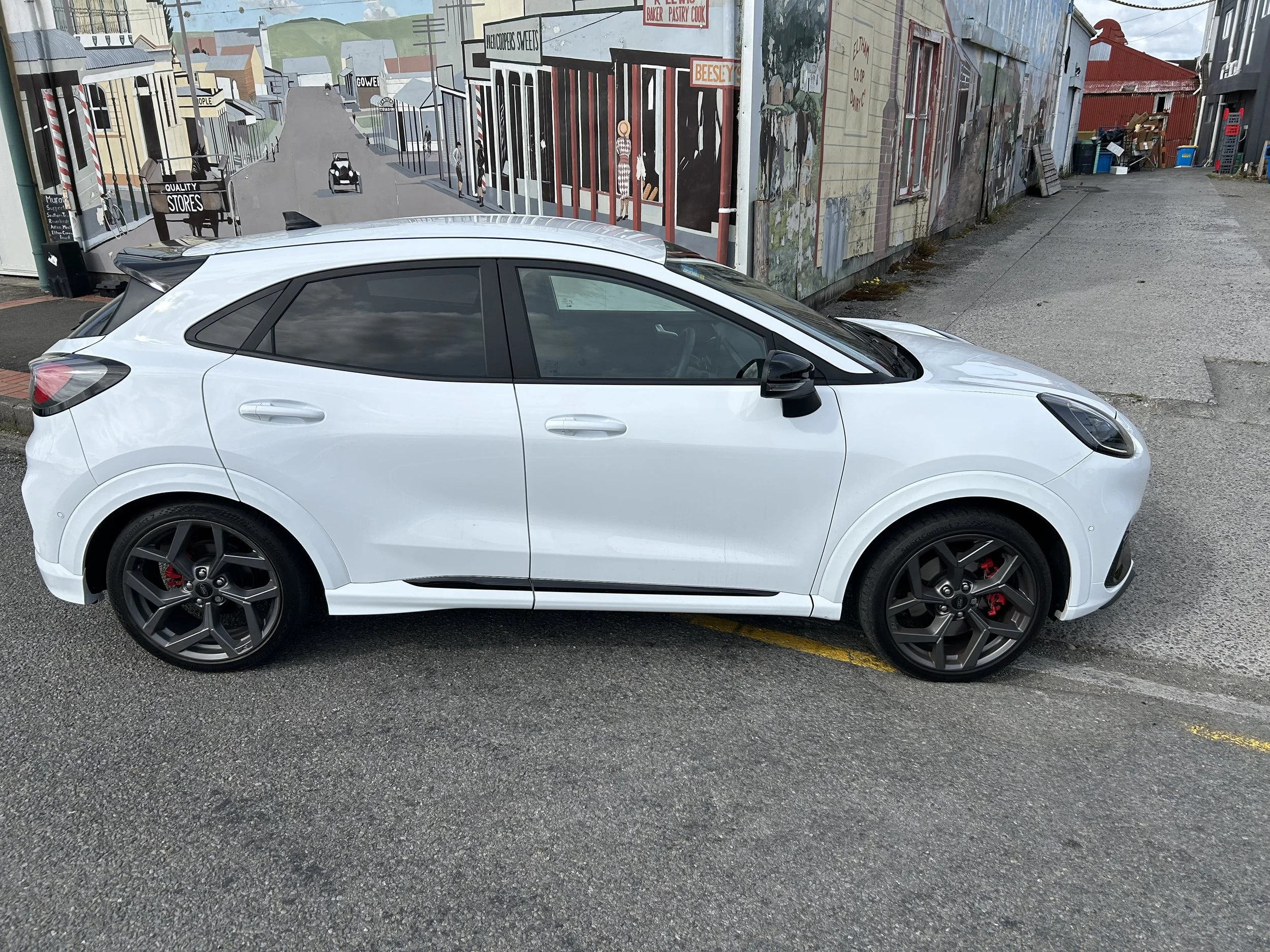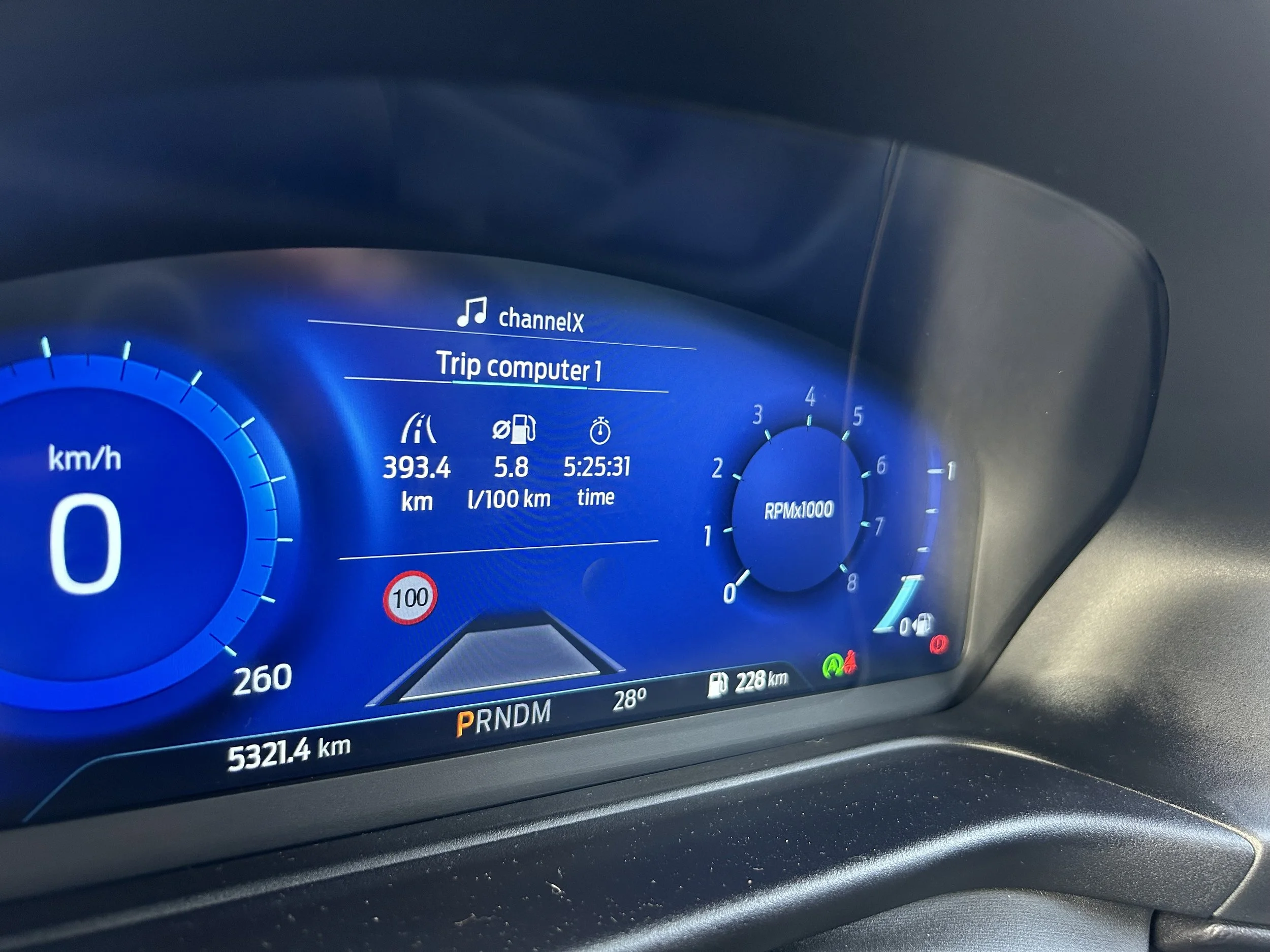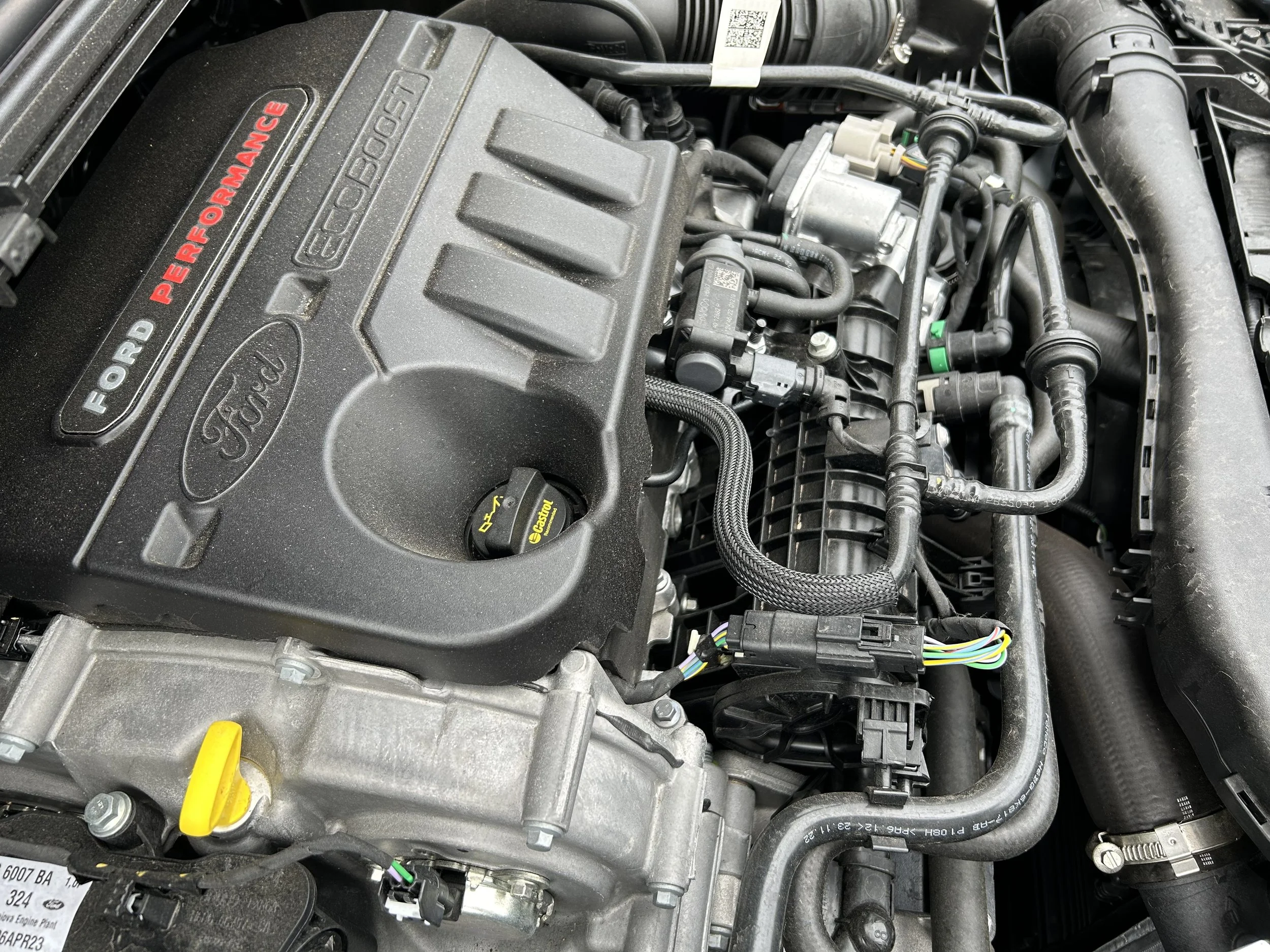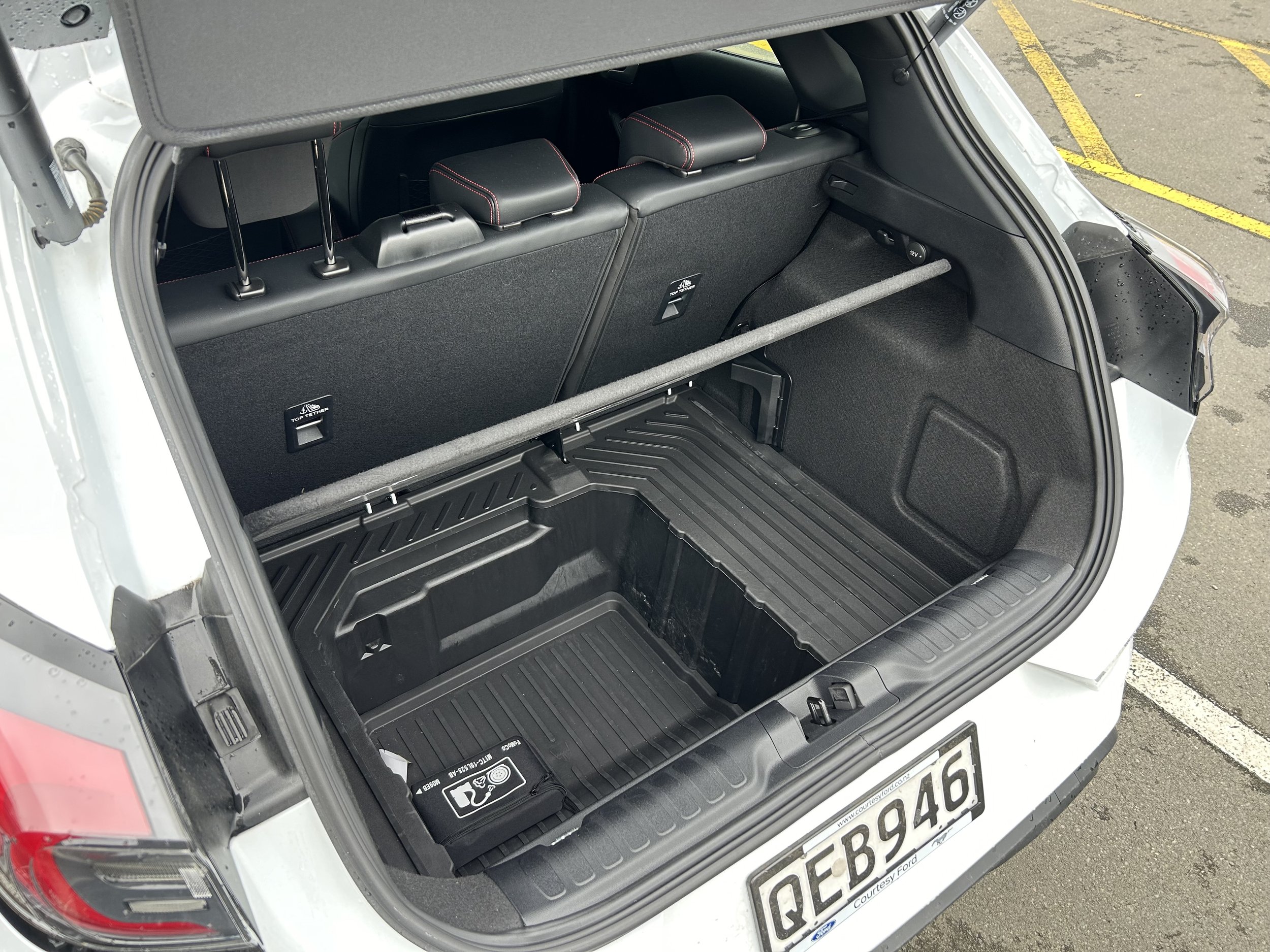Ford Puma ST: Ford’s cool cat
/It’s not quite like the one we had before, but there’s more than enough feel-good for enthusiasts.
Price: $46,490.
Powertrain: 999cc three-cylinder turbo petrol, 118kW/200Nm.
How big: 4226mm long, 1533mm wide, 2024mm high.
We like: Maintains hot hatch vibe with a practical crossover stance modern drivers seem to prefer.
Not so much: Hasn’t quite the vim of the Fiesta ST.
ONLY one problem with hot hatchbacks. They’re the wrong kind of truly great car.
Hence why the Ford Puma ST exists and its forebear, the Fiesta ST, no longer does.
ST is shorthand for ‘Sports Technologies’. It’s the badge you see on improved versions of the Blue Oval’s traditional mainstream models. We’ve seen ST versions of a few Fords over the years, but street cred standouts are out of Europe.
The Fiesta ST that was retired last year was among those. Calling it a giant in the small hatchback class is almost understatement. The Fiesta itself was a brilliant car, but the ST over its two generations amplified all its plus points 10 fold.
The last especially was a proper old school, cock-an-inside-rear-into-a-bend at speed, sporty bang-pop soundtracked little six-speed tearaway whose life’s ambition was to show up far more exotic performance fare. It was relatively cheap, didn’t cost much to run and motoring commentators really bought into it.
Yet celebrating the dream is one thing, buying into quite something else. And that’s where the Fiesta struggled. It was often the car you knew you should have bought, yet didn’t. Why?
Because, as wickedly, wonderfully hot as it was, it was also flawed, on two counts. For one, it was a hatchback. A body style that no longer makes sense.
On top of that, it was also a manual gearbox car. So even if had been affordable to the ultimate ‘in-crowd’ it was really designed to win over, young drivers, it would have struggled because an increasing count of them don’t like having to operate a gear stick and three pedals.
Don’t take this too personally. It wasn’t just Kiwis who could see past these factors being issues. Pretty much every market Fiesta went into had the same reservations. Which only fuelled Ford sentiment that the small car segment had to move away from traditional hatchbacks and into what are known as B-segment SUVs and crossovers.
Anyway, last year the party ended for Fiesta. Now Ford is seeking to rekindle the ST spirit with a sister car. One that outwardly might seem a bit ‘wrong’ because, first, it’s a petite crossover and, second, it has an automatic transmission.
In reality, those are both beneficial. The Puma is a Fiesta dressed more to meet popular taste. Same platform, all the same base mechanicals. It’s not only a more practical car, but a better one for performance use. That’s why Ford has retired Fiesta from world rallying and now runs the Puma instead.
Over in the United Kingdom, Puma ST arrived as soon as Fiesta ST hot-footed into retirement. That could have happened here, but didn’t, because the new car originally only offered the manual box we all revered but hardly bought. So Ford NZ waited for this alternate, which entered production last year, with the Powershift automated manual tranny.
Actually, there’s more give and take to this. The NZ spec car is still the smallest and cheapest member of the Ford Performance team, but larger, not quite as feisty and more expensive than the one that came before.
As much as $46,490 makes this Puma flagship reasonable buying, it’s also painful reminder about what stupendous value the last Fiesta ST was in 2019, when it sat at $35,490. If ever I get a time machine …
On the path of progress, some other stuff has gone a bit backward, too.
If you have a Fiesta ST and have checked out the Puma ST, you’ll know they have the same 1.0-litre engine, but now it’s in a less fiesty state of tune; dropping from 147kW and 290Nm before to 118kW and 200Nm now.
That’s not an emasculation, because there’s now a 48 volt system including, which when active swells that output to 125kW and 248Nm.
So the gap narrows, but not enough to remove the Fiesta from its pedestal as Ford’s hottest wee thing of recent time. The previous 0-100kmh potential of 6.8 seconds isn’t tested; Puma does it in 7.4s. And, more vexingly, the hybrid involvement doesn’t improve economy and CO2 output. Both climb slightly, now. Go figure, right?
It gets less phwoar because of the transmission; that automated manual brings many benefits, but it cannot take the heat from the 1.0-litre in its full strength format we used to know, let alone the 1.5-litre that the manual Puma ST also has in some other countries. But not here.
Still, there’s no turning the world back to where it was. And there’s still fun to be had, because what we get now is still packed with potential and certainly hasn’t any fewer of the clever tech enhancements of special drive modes, a smart LSD, quickened steering, tricky new springs to make every drive grin-inducing.
As good as the old engine was, the new is potentially better in its power deliver. Plus, compared to the regular Puma, it’s still a rocketship, with 26kW more power.
Plus, for all that the Puma body styling makes for a more family-friendly accomodation, it’s almost as focused as the old Fiesta ST. You can see that simply from how it imparts just at visual level or, for that matter, from sitting in it.
Simply it having heftier-bolstered Recaro front seats reminds that, as with any ST, the driver is this variant’s priority. You don’t put those form-fitting, track-sorted chairs into any car.
They’re not the easiest to egress decorously on a school run and also demand more cockpit space than the regular Puma items. Foot and lower leg room for rear seat passengers become compromised. On the other hand, they’re great items for anyone into their driving.
The whole car is. Some products with performance orientation seem think all that is required is some appropriate decoration. Puma goes further, but let’s agree Ford has also dressed the car to impress. It has a cool body kit which, with the low ride height, dual exhausts and large-sized rims with low profile rubber, add more vim to the pleasing look of this curvy crossover.
The interior looks reasonable, too, without going overboard. The car’s mainstream routes remain evident and there’s no attempt to bung in some awkwardly fake carbon fibre or ‘WRC-bred’ accreditations, thankfully.
Not to say it doesn’t have special touches. In addition to the buckets, Puma ST achieves its own digital instrument display to differentiate from the standard car, to accomodate newfound range of driving modes and a black instrument display replaces the traditional blue.
The infotainment at the moment is the Sync3 system, as opposed to the more advanced Sync4 now being found elsewhere in Ford-dom and expected to come to this car with a facelift zipping through later this year., While the current set up looks a bit dated in aspect to the fonts and screen size, it is still quite user-friendly, with big icons and clear displays.
The gear shifter is backed up by a set of slightly cheap-feeling shift paddles on the back of the steering wheel for those who'd like to take charge of shift changes themselves.
Some of the plastics within this cabin impart as being a touch more durable, but it is a well designed. Likewise, while cabin space isn’t overly-generous, it seems to make best use of what it has got. It’s not unfair to suggest there's more room than you might think. If you only carry adults in the back occasionally, the Puma will do the job.
In respect to boot space, there’s more than meets the immediate eye, as while the main area seen when you open the tailgate seems somewhat less than capacious, lift the floor and you’ll find an 80-litre tub, which is waterproof and comes with a drain plug so you can let any water out. The idea is you can store muddy wellies or sports kit in there without messing up the lovely carpet.
But, anyway, down to the driving. The Puma ST with Powershift has lots going for it. At same token, you do tend to wonder how much better the 1.5-litre manual might be. As enticingly fizzy as the 1.0-litre is, the chassis competence here is such that it could easily cope with the bigger engine’s 32kW additional oomph.
The 48-volt mild-hybrid system seems a shirker in respect to how much extra vim it actually brings to the driving feel. Gut feeling here is that the enhancement acts far more as a glorified stop/start feature than as an energy boost. It certainly cannot power the vehicle on its own. It’s not holding this car back, but you get impression that all the effort going into getting those wheels turning is down to the engine itself.
That’s fine. The 1.0-litre is one for Ford’s finest offers; even though it has been around for ages now, you still feel surprised about how something so small can offer so much.
What emboldens the sense of chutzpah is its aural character. Associating with its obvious effervescence is an eager growl, particularly obvious if you go into the absolute sports settings and set your mind to making full use of the revs, which also means being committed to employing the hand shifters.
The benefit of the seven speed auto comes in general driving, when you just need to stow some of that perkiness. As much as the official figures suggest the manual could be thriftier, on a decent drive the auto does lean out considerably, and is more refined as well.
What keeps the Puma on the same hot list as its predecessor is the special quality of its driving feel. No argument, the manual we don’t see would likely be more subjectively engaging, but as we get it, this Puma ST nonetheless makes you feel like an organic part of the machine.
It feels very agile, with nicely weighted, accurate steering. Some body lean in corners is noticeable, yet it feels secure and the plentiful grip on offer from those 225/40ZR19 Continental Sport Contact 7s helps to make it very entertaining thing on twisting roads. That the sporty engine note comes complete with some synthetic pops and bangs from the exhaust enhances the impression of it being an ideal scampering accomplice.
Due to the larger wheels and sporty suspension setup, the ride quality could be a make-or-break. What some might call communicative risks being considered by others to be a little too fidgety. Once you're up to speed, however, it becomes refined, but potholes and speed bumps demand careful consideration. Road noise from coarse chip can intrusive, too.
What’s quite nice about it is that, while Ford gives Puma a very complete set of driver assistance features, none conspire to be ruinous to the car’s elemental feel of purity.
It’s a nicely sporty alternate to the at least $6000 cheaper standard and ST-Line formats, both with a 92kW/210Nm1.0-litre petrol engine with electric assist, and an appropriate flagship, though that position might of course be temporary, with new stuff likely on the way.
Impending are not just a facelifted ST, already unveiled in the United Kingdom, but also an exotic electric-pure variant, called the Puma Gen-E, the world has yet to see, but also expected this year.
The electric Puma is known to share a Ford-developed platform and front drive-sorted single motor powertrain with the freshly revealed Ford E-Transit Courier van whose NZ availability, also in 2024, was confirmed last year. This set-up in the van presents 100kW/ 290Nm driving the front axle, with a top speed of 144kmh.
Assuming it’s still on track, Puma EV will be the second fully electric passenger Ford here after the Mustang Mach-E, with ongoing speculation that an earlier decision about keeping out the Explorer, which bases on Volkswagen’s MEB electric platform, might yet be reconsidered.
That’s in the future. In the here and now, there’s a special baby that, aside from just not being as outright ferocious, by and large otherwise otherwise successfully reimagines and preserves the legacy of a forebear we all should have celebrated more, but didn’t. For which we’ve only ourselves to blame for that.

